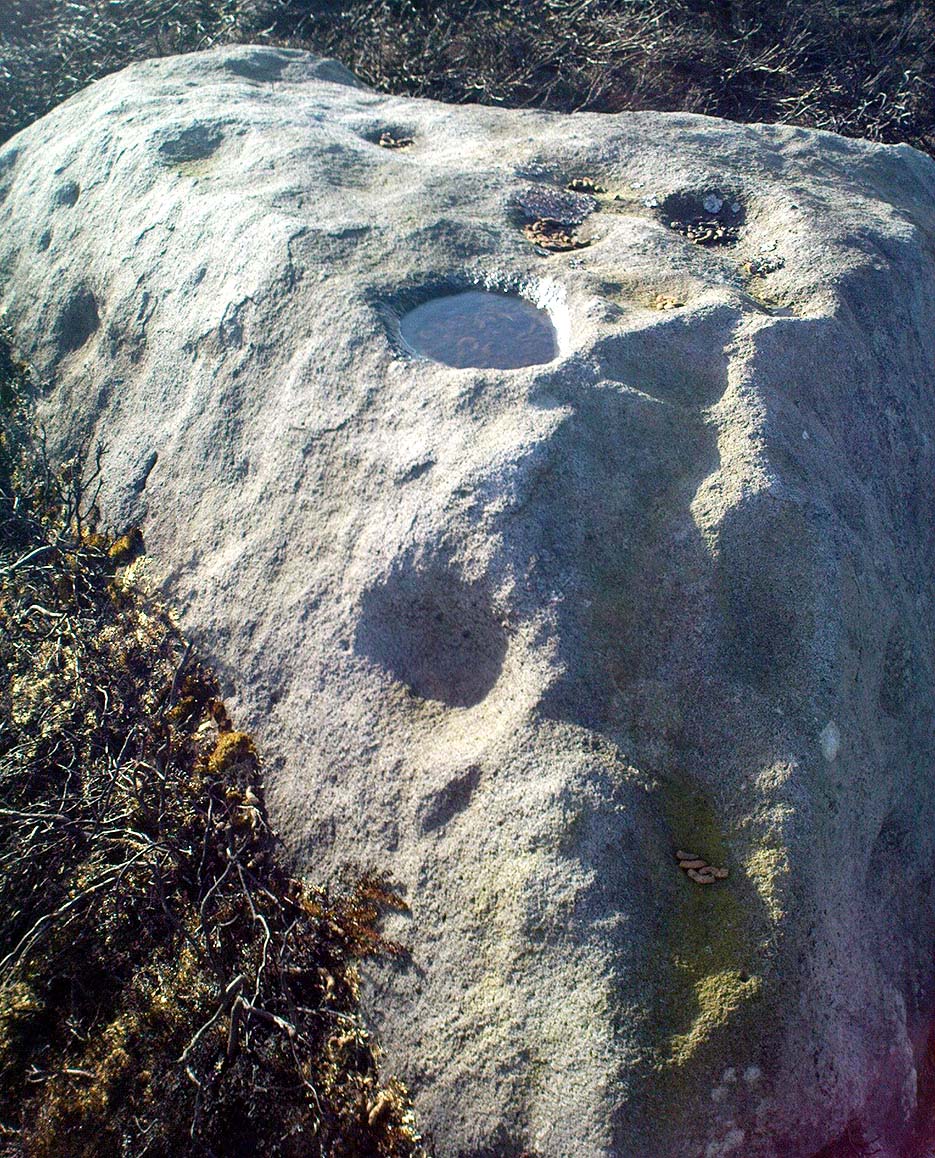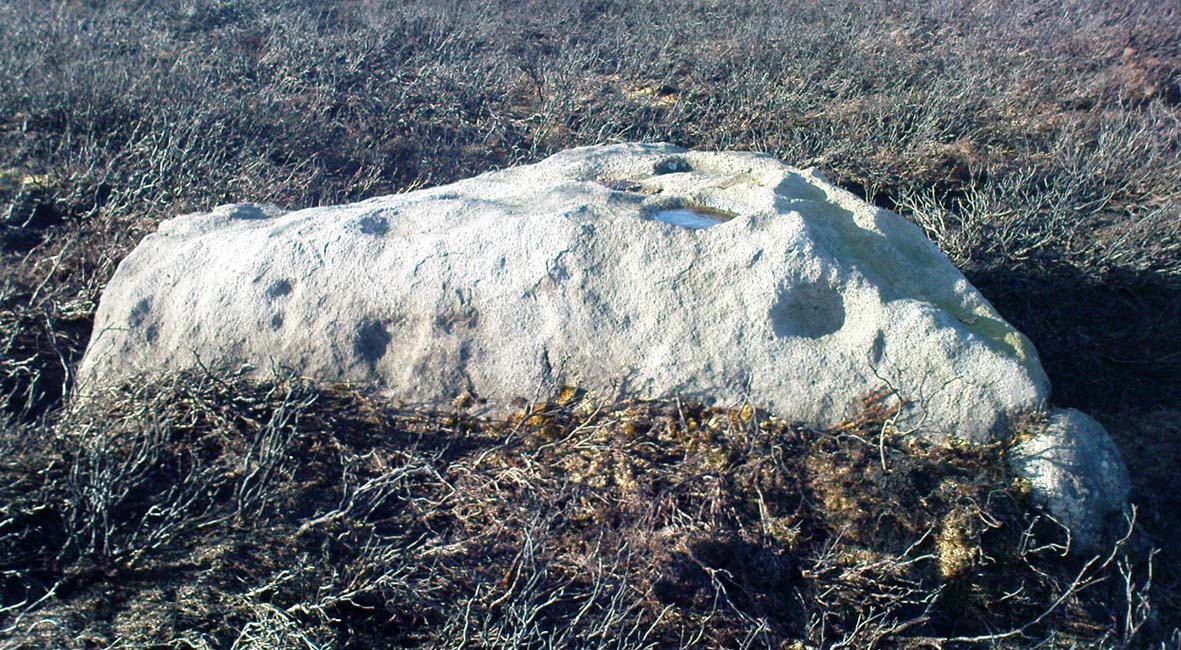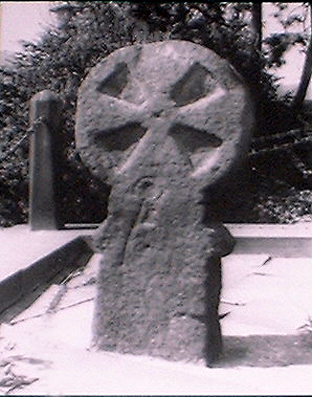Cup-Marked Stone: OS Grid Reference – SE 1304 4582

Head for the binary-like Idol Stone carving and keep walking on the footpath, up the hill. Once on top of the ridge, walk along it to your right (west) for about 300 yards, then walk south (left) into the flat heathland plain. Look around!
Archaeology & History
I’m probably not reading it right – but it seems this large stone with several distinct cup-marks on its vertical south-face, isn’t in the surveys of either Hedges (1986) or Boughey & Vickerman (2003). If someone can correct me on this one – please do!

This is quite a large boulder, as the photos here show. At least two average-sized cup-markings have been etched onto the south face, and two larger ones accompany them on the same edge. There’s another larger cup-mark on the northeast side of the stone, and a possible companion, which may or may not be artificial. Then on top of the stone we have several large cups and a ‘bowl’ — though some of these upper markings may be natural, or just well-eroded cup-marks. It’s hard to tell for sure!
Now I’m gonna have another look in the Hedges, Boughey & Vickerman surveys. They surely can’t have missed this!
© Paul Bennett, The Northern Antiquarian
